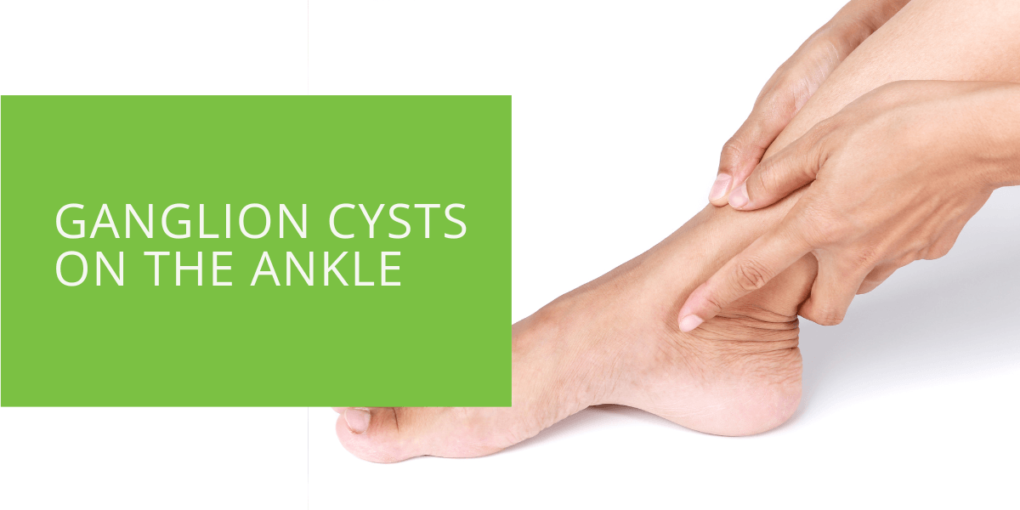Understanding Ganglion Cysts on the Ankle
Ganglion cysts are intriguing fluid-filled sacs that develop near tendons or joints within the body. This article will delve into the specifics of ganglion cysts that commonly occur in the ankle, shedding light on the mysteries surrounding these peculiar formations. At ePodiatrists, our extensive expertise ensures that we address these concerns promptly and effectively, prioritizing your foot and ankle health.
Key Takeaways
- Ganglion cysts in the ankle are fluid-filled sacs that can cause discomfort and pain, often stemming from repetitive microtrauma or joint and tendon irritation.
- Diagnosis involves a thorough examination by a podiatrist, including physical assessment and potentially advanced imaging techniques like MRI or X-ray.
- Treatment options range from non-surgical aspiration to surgical removal, with the choice depending on the severity of symptoms and recurrence of the cysts.
What Is a Ganglion Cyst?
A ganglion cyst often likened to a small, benign sac filled with a jelly-like fluid, can be perplexing. These cysts frequently form near tendons or joints, causing discomfort and pain. While the precise cause of ganglion cysts remains elusive, they are thought to be linked to irritation of the joints or tendons.
Ganglion cysts can perplex individuals due to their unexpected appearance and fluid-filled nature. They often lead to discomfort or pain, necessitating further exploration of their origin and management.
Causes of Ganglion Cysts
Understanding the root causes of ganglion cysts, particularly in the foot and ankle region, is essential. Repetitive microtrauma, such as continuously wearing ill-fitting shoes or engaging in excessive physical activity, can irritate the tendons and joints. This irritation is believed to contribute to the development of ganglion cysts significantly.
Ganglion cysts in the ankle often stem from daily activities that stress the joints and tendons. Recognizing these contributing factors is crucial to prevent and manage these cysts effectively.
Diagnosing a Ganglion Cyst on the Ankle
Diagnosing a ganglion cyst on the ankle necessitates a meticulous examination by a qualified podiatrist. The diagnostic process involves a comprehensive physical examination and a detailed review of the patient's medical history. In some instances, advanced imaging techniques, such as MRI or X-ray, may confirm the diagnosis and rule out other conditions.
A thorough diagnosis is crucial for effective treatment. Podiatrists employ a combination of physical examination and advanced imaging to identify and assess ankle ganglion cysts accurately.

Symptoms of an Ankle Ganglion Cyst
Ankle ganglion cysts can manifest various symptoms, causing concern and discomfort. Common signs include the presence of a visible lump on the ankle, pain, and discomfort when moving the joint. These cysts can vary in size and occasionally exert pressure on nearby nerves or interfere with joint function, leading to increased discomfort. Furthermore, certain activities or footwear can exacerbate the symptoms.
Ankle ganglion cysts can impact daily life significantly. Understanding their symptoms and how they affect joint function is crucial for early recognition and intervention.
Non-Surgical Treatment Options
For many individuals with ankle ganglion cysts, non-surgical treatment options are the initial approach. One of the most common methods is aspiration, which involves using a needle to withdraw the fluid from the cyst. This minimally invasive procedure reduces the cyst's size and alleviates pain. However, it is important to note that ganglion cysts may reoccur even after aspiration.
Aspiration is a valuable non-surgical option for managing ganglion cysts. It offers relief from pain and discomfort, but it's essential to understand its limitations and the potential for cyst recurrence.
When Ganglion Cysts May Return
It is not uncommon for ganglion cysts to reappear after aspiration. Several factors contribute to their recurrence. Sometimes, the cyst sac may not be entirely removed during aspiration, allowing it to refill with fluid gradually. Additionally, the underlying causes of the cyst, such as persistent joint or tendon irritation, may lead to the formation of new cysts over time.
Recognizing the circumstances under which ganglion cysts may return is crucial for patients who have undergone aspiration. Understanding these factors helps in managing expectations and planning for long-term care.
Surgical Treatment for Ankle Ganglion Cysts
Surgical intervention becomes considered when non-surgical methods prove ineffective or ganglion cysts persistently reoccur. The surgical approach involves completely removing the cyst sac and any associated tissue. This option is typically recommended when the cyst causes significant pain, hampers joint function, or if there are concerns about an underlying structural issue in the ankle.
Surgical treatment is a viable option for addressing ankle ganglion cysts when they become chronic or significantly impair daily life. It offers a more permanent solution, but patients should be well-informed about the procedure and its potential benefits.
Conclusion
At ePodiatrists, our commitment to addressing the challenges of ankle ganglion cysts is unwavering. We have the expertise to diagnose and treat these cysts effectively, ensuring comfort and mobility. If you are experiencing symptoms such as a visible lump on the ankle or joint pain, we urge you not to delay scheduling an appointment with us. We are dedicated to providing personalized care and exploring all treatment options, from non-surgical aspiration to surgical removal, to safeguard your ankle's health and overall well-being.
Don't let an ankle ganglion cyst disrupt your life. Contact ePodiatrists today and allow us to help you regain a pain-free and active lifestyle. Schedule your appointment now!

